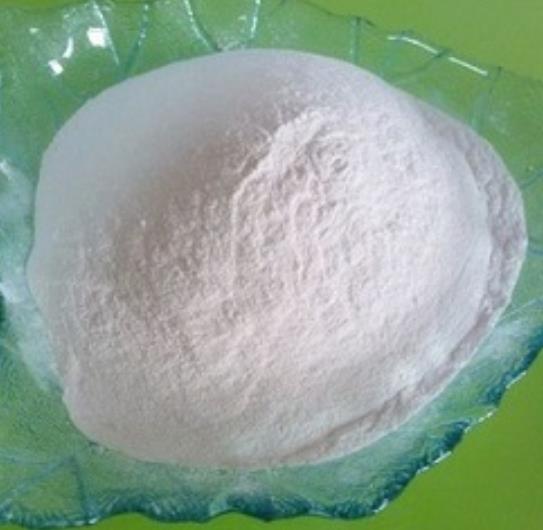L-Menthol: The Cooling Compound and Its Multifaceted Applications in Chemistry
May 21,2024
Introduction
L-Menthol, a naturally occurring monocyclic terpene alcohol, has carved a significant niche in the chemical industry due to its unique cooling sensation and wide range of applications. Extracted predominantly from Mentha arvensis, a species of mint, L-menthol is not only a sensory stimulant but also a compound of interest for its therapeutic properties and its role in various industrial applications[1].

Figure 1 Characteristics of L-Menthol
Synthesis Methods
The synthesis of L-menthol can be approached through several methods, including extraction from natural sources and chemical synthesis. Traditionally, L-menthol is harvested through the extraction of peppermint oils, which are rich in this compound. However, the demand for L-menthol has led to the development of synthetic routes. One of the most common synthetic methods involves the hydrogenation of thymol derived from m-cresol and propene in the presence of a suitable catalyst, producing synthetic L-menthol that is indistinguishable from its natural counterpart in terms of chemical structure and properties.
Main Components
L-Menthol is characterized by its chemical formula C10H20O and is known for its clear, crystalline form at room temperature. Part of a larger family of menthols, it includes isomers that differ in the configuration of the methyl groups attached to the cyclohexane ring. However, L-menthol is particularly significant due to its predominant occurrence in nature and its specific stereoisomer configuration, which is crucial for its sensory effects. This compound is the active isomer that interacts with cold-sensitive TRPM8 receptors in the skin, which are responsible for transmitting the sensations of coolness and freshness to the brain. This interaction is pivotal not just for its sensory impact but also for its therapeutic effects, such as soothing minor throat irritation. The stereochemical purity of L-menthol is vital in these roles, influencing both its efficacy and sensory perception, making it a preferred choice in pharmaceuticals and food products alike. Its high optical purity ensures that it delivers a consistent and reliable effect, whether used in clinical applications or consumer products.
Applications
L-Menthol's applications are diverse, ranging from pharmaceuticals to personal care products. In the medical field, it is used as a topical analgesic to relieve minor pains and aches, often formulated in gels, balms, and patches. L-menthol acts on the kappa opioid receptor, providing a cooling sensation without causing temperature change, which can be beneficial for pain management. Moreover, it serves as a penetration enhancer in transdermal drug delivery systems, helping other drugs penetrate the skin more effectively.
In the food industry, L-menthol is used to impart a fresh, cool flavor to confections, chewing gums, and beverages. Its volatility makes it an excellent choice for oral care products, such as mouthwashes and toothpaste, where it provides a lasting freshness effect. Additionally, L-menthol finds utility in the fragrance industry, where it adds a cool note to perfumes and cosmetics.
Storage Methods
Storing L-menthol requires careful handling to maintain its integrity and effectiveness. It should be kept in a cool, dry place away from direct sunlight to prevent degradation. L-menthol is typically stored in airtight containers to minimize exposure to air, which can lead to oxidation and reduction in its characteristic cooling effect. Proper storage ensures that L-menthol retains its quality and efficacy until it is processed into various products. Additionally, humidity control is crucial as high moisture levels can promote caking and physical degradation of the crystals, further emphasizing the need for controlled environmental conditions.
Conclusion
L-Menthol continues to be a compound of high interest due to its therapeutic properties and its versatility in applications across different industries. From its synthesis to its practical uses, the journey of L-menthol in the chemical sector highlights its importance not only as a flavor or fragrance additive but also as an essential component in medical and personal care formulations. As research progresses, the potential uses of L-menthol are expanding, paving the way for innovations in science and technology[2].
References
[1]Green B G. The sensory effects of l-menthol on human skin[J]. Somatosensory & motor research, 1992, 9(3): 235-244.
[2]Juergens U R, St?ber M, Vetter H. The anti-inflammatory activity of L-menthol compared to mint oil in human monocytes in vitro: a novel perspective for its therapeutic use in inflammatory diseases[J]. European journal of medical research, 1998, 3(12): 539-545.
- Related articles
- Related Qustion
- L-Menthol – a new treatment for breathlessness? May 7, 2022
L-menthol is a white crystalline solid with a peppermint odor and taste. Levomenthol is a levo isomer of menthol, an organic compound made synthetically or obtained from peppermint or mint oils with f
L-Menthol
2216-51-5You may like
- (-)-Menthol
-

- $31.00 / 500mg
- 2025-09-13
- CAS:2216-51-5
- Min. Order:
- Purity: 99.01%
- Supply Ability: 10g
- (-)-Menthol
-

- $31.00 / 500mg
- 2025-09-13
- CAS:2216-51-5
- Min. Order:
- Purity: 99.01%
- Supply Ability: 10g
- L-Menthol
-

- $0.00 / 25KG
- 2025-09-12
- CAS:2216-51-5
- Min. Order: 1KG
- Purity: ≥99%
- Supply Ability: 500mt/year






